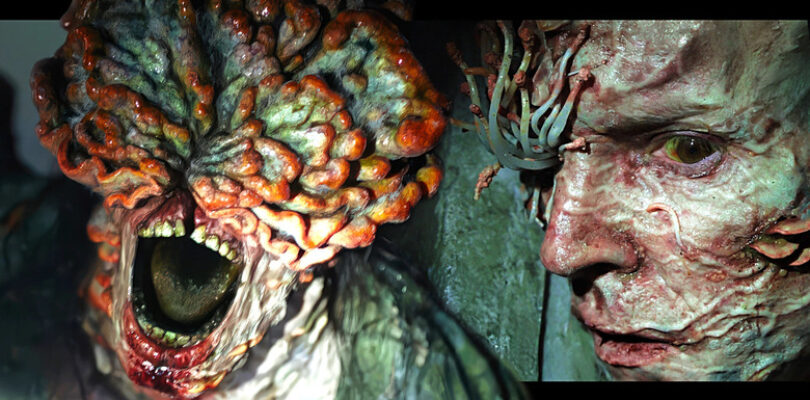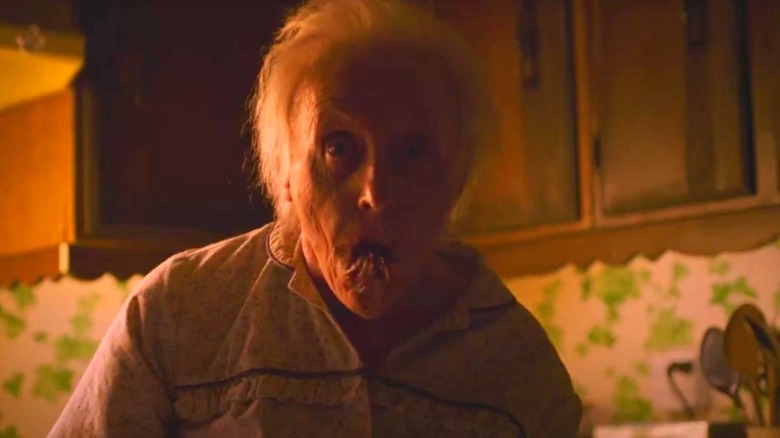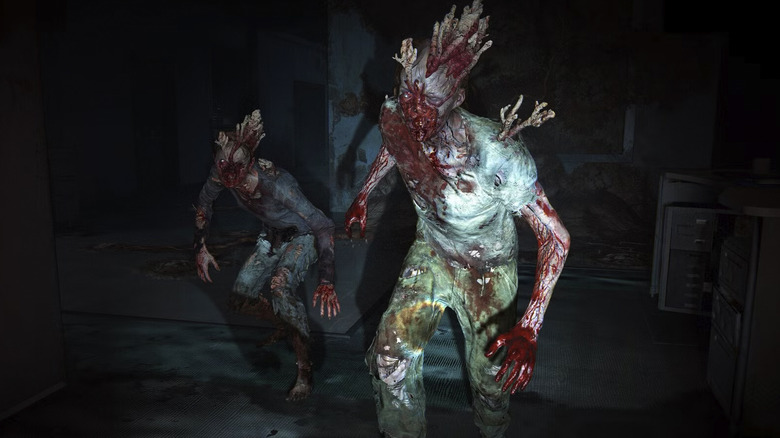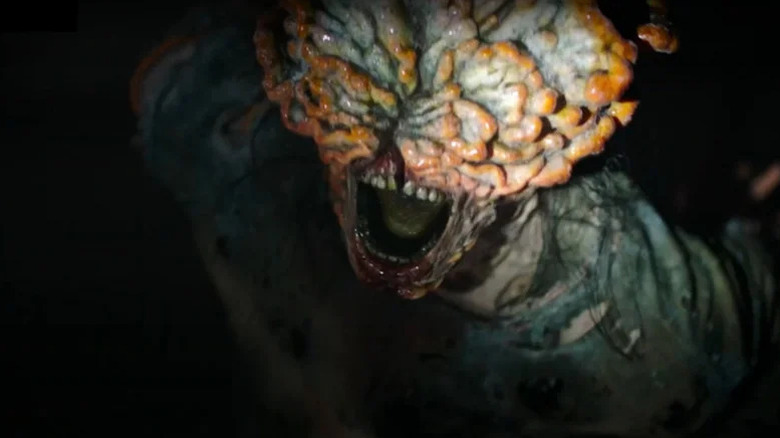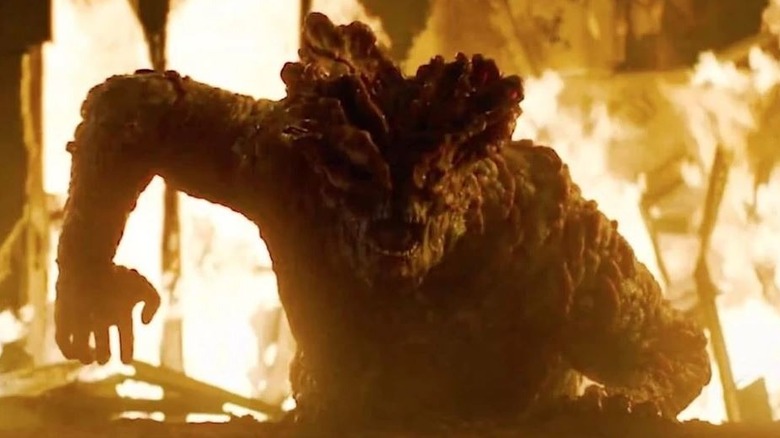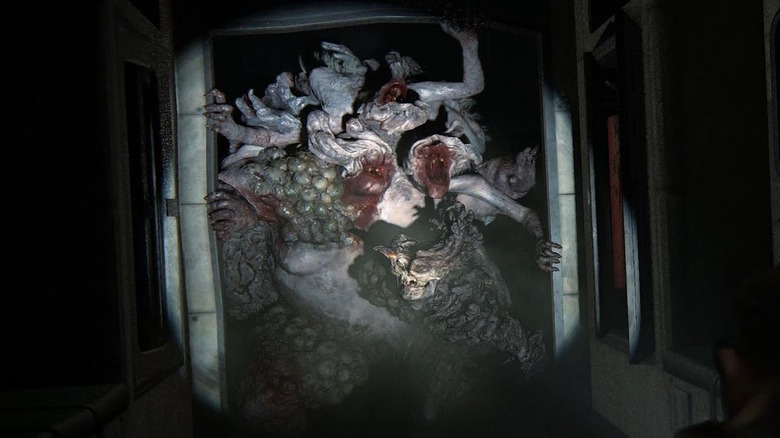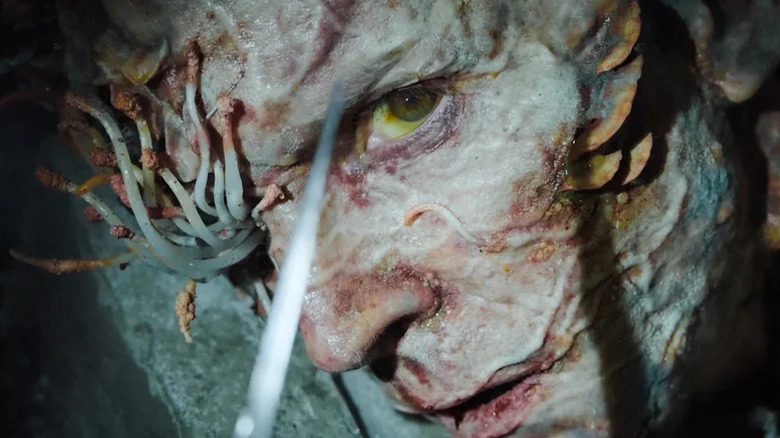HBO’s “The Last of Us” is a tale of a post-apocalyptic world that has been torn asunder by a global infection, caused by a mutant strain of Cordyceps fungus. The Infected turn into various types of hybrid fungus-human monstrosities as the Cordyceps wreaks havoc in their body and brain, starting out as fairly run-of-the-mill rage zombies before becoming something far stranger.
Advertisement
“The Last of Us” season 2 (which fixes a huge mistake from the first season) will continue the story of the people who struggle to survive in the aftermath of the Cordyceps outbreak and the ensuing nigh-total breakdown of society. However, the show hasn’t featured the Infected quite as much as the Naughty Dog video game series it’s based upon, both because stopping the narrative every few minutes to stab half a dozen Infected in the face would be distracting, and because the heart of the franchise has always been about human behavior in times of crisis. This is no doubt a correct decision from a storytelling standpoint, but the way the show wheels out dramatically different types of Infected without fully explaining the logic behind them can also confuse a viewer who isn’t familiar with the Cordyceps zombies and their life cycle. Let’s fix this with a handy guide on the types of Infected in “The Last of Us” video games.
Advertisement
Infected Stage 1: Runners
The very first stage of the Cordyceps infection is unnamed on the HBO show, but the games call these fresh zombies runners. Both versions are clearly recognizable as human and their defining characteristics is their aggression toward the uninfected, but there are certain key differences.
Advertisement
In the show, the Cordyceps infection essentially controls these first-stage Infected like awkward puppets, leading to clumsiness, janky movements, and visible fungal threads within their bodies. Once they catch their prey and inflict open wounds, they’re able to extend tendrils of fungi from their mouths, which they use to infect the victims. They’re extremely creepy, but comparatively weak and simple to deal with if you know what you’re doing and don’t get caught by a pack of them.
The game’s take on runners resembles a more straightforward zombie … at least on the outside. It’s very heavily implied that this stage is a living hell where the person’s mind is slowly overtaken by the infection, with their consciousness slowly fading as they helplessly ride a body that’s rapidly going feral and possibly even murdering their own loved ones. That gives a whole new meaning to that scene in the series premiere, “When You’re Lost in the Darkness,” where Sarah Miller (Nico Parker) finds out that her nice neighbors have been killed by their old, infected Nana (Wendy Gorling), doesn’t it?
Advertisement
Infected Stage 2: Stalkers
Stalkers, another phase of Infected, haven’t technically appeared in the HBO series, and it’s unclear if they’ll be popping up in the second season. But in the games, Stalkers are a transitionary form from the initial runner stage to the more advanced Infected ones, trading the janky, jerky movements of the freshly-Infected with a look that represents more fungal growth, typically growing what look like branches out of various parts of their bodies. They’re unnerving and dangerous, retaining their sight (which most later forms lack) and speed.
Advertisement
The worst trait of a stalker from the games is its surprising cunning, which surpasses virtually all other forms of Cordyceps zombie. This Infected is able to deploy simple stealth and survival tactics, which allows it to use rudimentary guerrilla tactics to approach and ambush its victims. In the games, the only sign of a stalker’s presence can be the distinctive croaking sound it emits … that is, until its get close to you and pounces.
Infected Stage 3: Clickers
The closest thing “The Last of Us” has to a signature monster, the clicker, is the third stage of the Cordyceps infection and the first one that looks so thoroughly alien that you’d be forgiven for thinking the poor creature’s body never belonged to a human being. At this point, the fungal growth doesn’t simply protrude from a recognizable person’s head and body anymore. Instead, it’s fully flowing out, and is well on its way to shaping the body in its preferred image. A clicker’s head has been turned into a blooming fungal mass that covers the eyes and renders this Infected unable to see. The body is also heavily deformed and enforced by hardened Cordyceps growths.
Advertisement
A clicker is effectively a super-powered, particularly ugly zombie that’s faster, stronger, and considerably more durable than the person it once was. Its most iconic aspect, however, is related to its lack of sight. Since there’s no way for it to see conventionally, the clicker perceives its environment by emitting chilling, throaty “click” sounds that it uses as a method of echolocation.
A dangerous opponent that will bite, slash, and tear anything that’s foolish enough to make noise in its vicinity, the clicker can only be taken down with extensive damage to its head. Joel (Pedro Pascal), Ellie (Bella Ramsey), and Tess (Anna Torv) are forced to battle no less than two of these dangerous creatures in “The Last of Us” season 1 episode 2, “Infected,” and the encounter makes for one of the biggest nail-biters of the season.
Advertisement
Infected Stage 4: Bloaters
Stage four of the Cordyceps infection coats the Infected zombie in a suit of hard fungus armor, transforming them into a stocky juggernaut that’s barely recognizable as a former human being. This stage is known as the bloater, and its physical prowess is far beyond anything the previous stages have at their disposal. A bloater is essentially a hulked-up clicker that makes up for its bigger bulk and slower speed by having increased strength, durability, and a frankly unfair long range ability to launch dangerous spore projectiles at the unwary opponent.
Advertisement
We’ve already seen one prominent bloater in the show’s season 1, episode 5, “Endure and Survive” — and if you ask Joel and Ellie, there really is no need for more sightings like that ever again. The creature emerges from the underground tunnels that Kathleen Coghlan’s (Melanie Lynskey) troops have ignored during her obsessive hunt for Henry Burrell (Lamar Johnson). The massive Cordyceps zombie is among the Infected who break the standoff between Kathleen’s troop and the protagonists, and it proceeds to wreak havoc among humanity like the super-strong horror monster that it is.
While the show’s version doesn’t demonstrate the video game bloaters’ spore-bombing abilities, it’s still easily as big, strong, and tough as they are. Since bloaters are a dangerous presence in “The Last of Us Part II” as well, fans may yet see a live-action adaptation of the monster’s deadly spore projectiles.
Advertisement
Shamblers are an alternate fourth stage of the infected in The Last Of Us
Not every Cordyceps zombie that manages to survive for years and years becomes a bloater. Based on the circumstances, some of them end up becoming something even stranger and nastier: shamblers. Introduced in “The Last of Us Part II,” the shambler is an alternate fourth stage of Cordyceps infection that only the sturdiest hosts can reach over time. Shamblers are effectively bloaters that have a chance to mature and develop in particularly wet conditions, and despite their comparable size, they’re physically not nearly as strong as their bloater cousins. While they’re utter damage sponges, they’re far less armored, too.
Advertisement
Yet, a shambler has certain advantages other highly-developed Cordyceps zombies lack. They can attack using powerful acid spore gas, which they can emit from the various nauseating fungal growths all over their body. This trait remains dangerous even at the moment of the creature’s death. When a shambler is defeated, it doesn’t go quietly. Instead, all of its acid spore pustules explode at once, which gives a dying shambler a handy, explosive self-destruction mechanism.
Shamblers are nowhere to be seen in “The Last of Us” season 1, which is understandable since the season only adapts the events of the first game. Still, considering how faithful the HBO show is to its source material, there’s every reason to believe that these disgusting creatures will make a live-action appearance sooner or later.
Advertisement
The Rat King is an amalgam Infected creature that makes for a unique The Last of Us monster
The term “rat king” refers to a group of rats with tails that have tangled together in a way that effectively locks the rodents together as a singular entity that’s made up of many separate creatures. This, really, is all you need to conjure an image of the Cordyceps zombie called the Rat King.
Advertisement
The only known Rat King in the franchise makes its appearance in “The Last of Us Part II.” It’s a horrendous creature that consists of a bloater and several clickers and stalkers. This group of Infected has spent so long in the confined basement area of the Seattle hospital Abby Anderson (mo-capped and voiced by Laura Bailey in the game, played by Kaitlyn Dever on the show) visits that the fungus has fused them all together into a massive, unstoppable wrecking ball. What’s more, the Rat King Infected can operate separately once the fungal matter that conjoins them is sufficiently damaged. As such, fighting the creature is a truly arduous task that requires Abby to first defeat the whole Rat King entity and then take care of the uniquely strange bloater and stalker entities that escape from the mass.
Advertisement
The Seattle Rat King is by far the heaviest known hitter in “The Last of Us” video game series, and based on its comparatively late-game place in the sequel’s narrative, it’s very unlikely that the HBO show intends to fully unleash it before the tail end of season 2. Incidentally, its existence also proves that the Cordyceps brain infection can create astoundingly dangerous creatures if the circumstances are just right. Who knows how many Rat Kings (or even worse things) are lurking in the franchise’s unexplored basements and post-apocalyptic tunnels?
The show has toyed with other unique Infected forms
As if the aforementioned forms weren’t creepy enough, HBO’s “The Last of Us” has introduced a fascinating new Infected detail that wasn’t in the games. In season 1 episode 2, “Infected,” Joel, Tess (Anna Torv), and Ellie travel through the heavily Cordyceps-contaminated city of Boston. On their way, they discover that the relatively docile and calm Infected in the area are even more fungus-like than they initially appear to be. They’re connected through a vast network that manifests in the shape of omnipresent, highly sensitive vines — and when a human steps on one, all the Infected in the area are immediately informed of the whereabouts of the disturbance.
Advertisement
The games, thankfully, lack a system that sics an entire city’s worth of Infected on the player character at the slightest misstep. However, the fact that the show has introduced the Cordyceps hive mind suggests that there’s no telling just what sorts of original Cordyceps monstrosities the show might be willing to cook up going forward.
On the other hand, it’s also entirely possible that the show will walk back the hive mind approach in order to make room for the franchise’s most famous environmental hazard, which “The Last of Us” season 1 deliberately left out: spores. While it’s fine that HBO’s “The Last of Us” doesn’t have the spores that require characters to keep a gas mask on hand in order to avoid becoming infected, certain integral season 2 scenes hinge on their existence — and a recent promotional image confirmed that spores will indeed be a factor in “The Last of Us” season 2. As such, it’s entirely possible that the hive mind network was just a temporary narrative experiment.
Advertisement
But we’ll find out when “The Last of Us” season 2 premieres on HBO on April 13, 2025.

